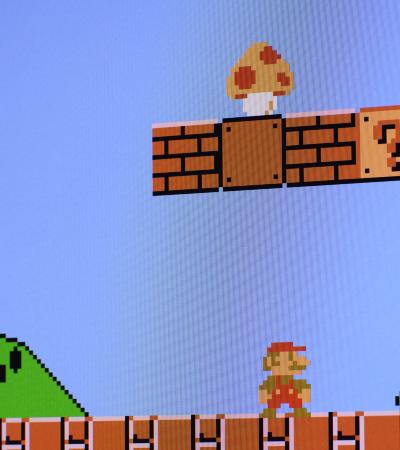Patrons of all ages attempted to survive the Oregon Trail in this You-Choose-Adventure style program! Patrons made decisions and participated in activities much like the retro game; they visited settlements, hunted for food, and yes, some did die of dysentery.
Advanced Planning
The primary objective of this program was to encourage positive cross-generational interactions, but much like the original game, this program taught about a critical time in American History and critical thinking skills.
In accordance with our library policies, I planned this program four months prior to the event, though I estimate it only took a few days to create the materials. Only one staff member prepared the materials and was officially scheduled to facilitate the program, but it took support from circulation staff to help the program run smoothly on the day. Staff played the game in advance to test the program, however, the first time we facilitated the program for patrons I realized that certain elements needed to be simplified.
Marketing
The event was promoted in a variety of ways, including flyers, social media posts and seasonal brochures. This program was marketed successfully, especially because parents and grandparents enjoyed explaining what the game was to their younger family members and word of mouth is sometimes the best advertising.
Budgeting
This program was facilitated with materials the library already had from previous programs like Nerf guns and button makers, so very little money was spent on the program. When developing a similar You-Choose program, costs can be minimalized by building activities around materials the library already has. The other cost to consider is printing costs, the main component of a program like this are the many signs that mimic pages of a You-Choose book.
Day-of-event Activity
On the day of the event, I needed to tape up the paper signs that made up most of the program and set up the three activity stations. Because I prepared a map that indicated where the signs should go and organized activity supplies ahead of time, setting up this program took less than 30 minutes. The easy set-up is one of the best aspects of this program and makes this type of program a great addition to a larger event.
Program Execution
This program was built like a Choose-You-Own-Adventure book. Patrons began their journey by picking up a worksheet at "Independence" at the front of the library that included simple instructions and a map of the library. Using the map and following signage, patrons made decisions that led them to the next sign. For example, at the "Soda Springs" sign patrons could choose to rest or they could take a shortcut, each of those choices would lead them to a different sign.
Every patron's journey was different based on their choices. When they inevitably came to a river crossing, they would roll an oversized dice and the side they landed on would indicate how they faired. Like the computer game, there were many perils. When something bad happened to them, patrons were directed to go to the meeting room to participate in an activity to potentially "save their life". For example, if they got lost and ran out of food they were directed to "go hunting" by shooting targets with Nerf guns. Like the rest of the program, the activities did not need a staff member to facilitate them, but there was a staff member in the room to assist if needed. Whether or not the patron "survived" their journey they received a custom button to commemorate their fate. Patrons left happily brandishing their "I died of dysentery" and "I settled" buttons.
Even with an unforeseen and brief closure that delayed the program, we had 84 people of varying ages participate. When considering the attendance and minimal staff time for this program, we think this type of program is a success! Participants were very complimentary and we have patrons ask about when the next You-Choose-Adventure is frequently.
Advice
When planning a You-Choose-Adventure program, I would recommend keeping things as simple as possible. One of the benefits of a program like this is that it requires very little staff to run, however, that only works if patrons can understand without a doubt what to do each step of the way.
I would also recommend choosing something that already works like a You-Choose-Adventure, like a video game. We were able to save a lot of staff time because we did not need to make "sets" to brand the program, instead, the posters were made to look like the classic computer screen. Finally, it is very important to have someone else play through the game beforehand to identify any "dead ends" or mistakes. Luckily, this was really fun for staff to play in advance and it only took 15 minutes before the library opened.



